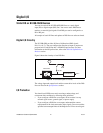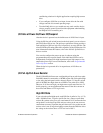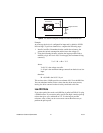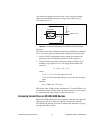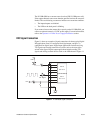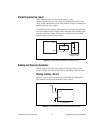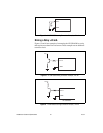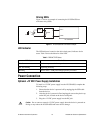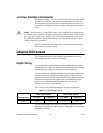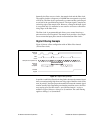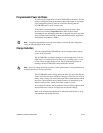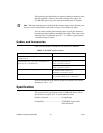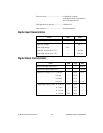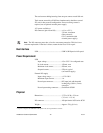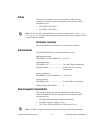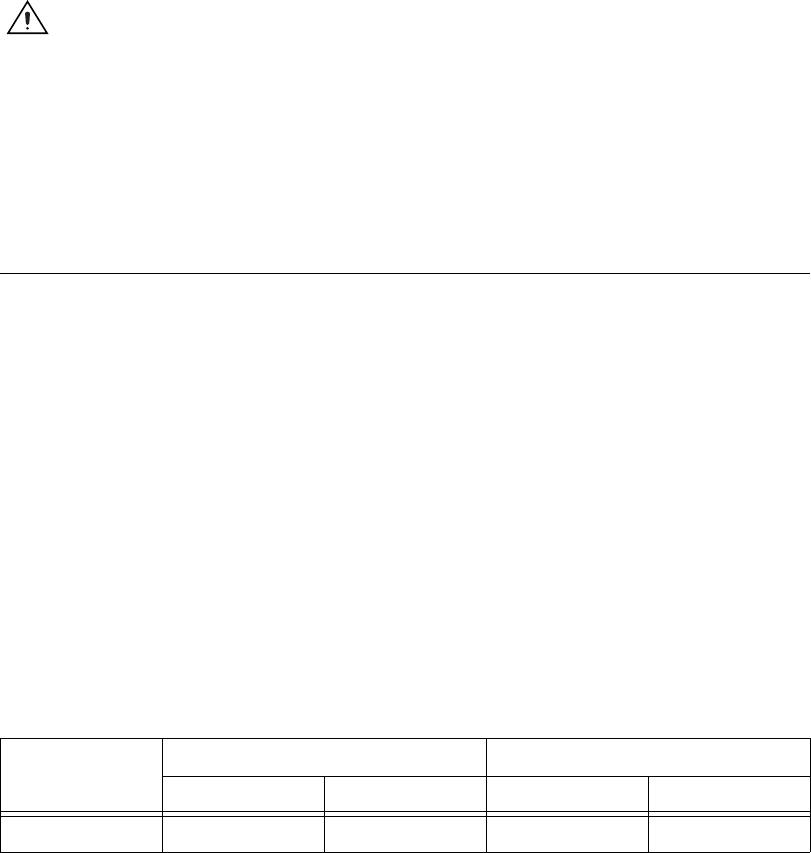
NI 6509 User Guide and Specifications 20 ni.com
+5 V Power Available at I/O Connector
Pins 49 and 99 supply +5 V power to the I/O connector. The power drawn
from these two pins shares the power consumption with the transceivers.
The I/O connector power has a fuse for overcurrent protection. This fuse is
not customer replaceable. If the fuse is blown, return the device to NI for
repair.
Caution The power pins, +5V and GND, connect to the computer power supply and are
not isolated. Do not connect a +5V power pin directly to GND or connect a +5V or GND
pin to any other voltage source. Doing so may cause injury or permanently damage the
NI USB-6509 components. National Instruments is not liable for any damage or injury
resulting from such a connection.
For more information on maximum power ratings and overcurrent limits,
refer to the Specifications section.
Industrial DIO Features
The NI USB-6509 features digital filtering, programmable power-up
states, change detection, and a watchdog timer.
Digital Filtering
Use the digital filter option available on the NI USB-6509 input lines to
eliminate glitches on input data. When used with change detection, filtering
can also reduce the number of changes to examine and process.
You can configure the digital input channels to pass through a digital filter,
and you can control the timing interval the filter uses. The filter blocks
pulses that are shorter than half of the specified timing interval and passes
pulses that are longer than the specified interval. Intermediate-length
pulses—pulses longer than half of the interval but less than the
interval—may or may not pass the filter.
Table 3 lists the pulse widths guaranteed to be passed and blocked.
You can enable filtering on as many input lines as is necessary for your
application. All filtered lines share the same timing interval, which ranges
from 200 ns to 200 ms.
Table 3. NI USB-6509 Digital Filtering
Filter Interval
Pulse Width Passed Pulse Width Blocked
Low Pulse High Pulse Low Pulse High Pulse
t
interval
t
interval
t
interval
t
interval
/2 t
interval
/2



